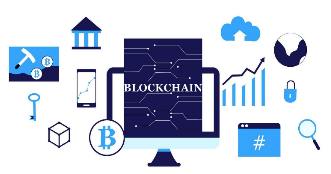Understanding Digital Currencies and Blockchain: A Beginner’s Guide
Introduction
Not long ago, the idea of money existing purely in digital form—and being transferred instantly across the world without banks—sounded like science fiction. Today, it’s becoming reality. Digital currencies and the blockchain technology that powers many of them are transforming how we think about money, transactions, and trust in the digital age.
In recent years, digital currency and blockchain have moved from tech jargon to everyday conversation. From Bitcoin’s rise to central banks exploring their own digital money, these terms are shaping how we think about finance, technology, and even trust. But what precisely are they, and why are they generating such universal interest?
What Are Digital Currencies?
A digital currency only exists in electronic form. Unlike the paper bills residing in your wallet or the coins in your pocket, it has no physical counterpart—you store it in digital wallets and use it online or in person via electronic payment systems. There are three distinct types of digital currencies:
Cryptocurrencies – Decentralized, blockchain-based currencies consisting of Bitcoin, Ethereum, and Litecoin operate independent of a central authority, relying on cryptographic proof rather than trust in a banking institution.
Central Bank Digital Currencies (CBDCs) – Digital forms of a country’s official currency, issued and regulated by its central bank (for example, China’s e-CNY or a potential U.S. digital dollar).
Stablecoins – Digital currencies tied to real-world assets like the U.S. dollar or gold to keep their value constant, for example, USD Coin (USDC) or Tether (USDT).
Key benefits of digital currencies include:
Faster transactions.
Lower costs for cross-border payments.
more financial inclusion for people without access to traditional banking.
What Is Blockchain?
At the center of most cryptocurrencies sits blockchain—a digital ledger technology that securely chronicles transactions across a network of computers. Imagine a shared spreadsheet that everyone can see, but no one can change without everyone else agreeing. That’s blockchain in a nutshell.
Each “block” covers a list of transactions, and these blocks are linked together (thus block + chain). Once added, the data is practically impossible to alter, which makes blockchain secure and trustworthy.
Key features of blockchain:
Decentralization – No single body regulates the network.
Transparency – Any individual or entity can observe transactions on public blockchains.
Security – Cryptographic algorithms protect data from tampering.
Immutability – Once recorded, data cannot be altered without network consensus.
How Do Digital Currencies and Blockchain Work Together?
When you send cryptocurrency to someone, your transaction is grouped with others into a block. This block is verified by participants in the network (called miners or validators) using complex algorithms.
Once verified, it is added to the blockchain, becoming a permanent record of the exchange. This process removes the need for a central authority like a bank—trust is placed in the blockchain’s transparency and cryptographic security.
Potential Uses Beyond Money
While digital currencies are the most visible application of blockchain, the technology holds sweeping possibilities:
Supply Chain Tracking – Verifying product origins and preventing fraud.
Voting Systems – Providing secure, tamper-proof election records.
Digital Identity – Allowing people to control their personal data securely.
Smart Contracts – Self-executing agreements that trigger when conditions are met.
Challenges to Consider
Despite the potential, digital currencies and blockchain face obstacles:
Regulation – Governments are still figuring out how to oversee them.
Scalability – Some blockchains can be slow or energy-intensive.
Security Risks – While the blockchain itself is secure, wallets and trades can be hacked.
Adoption – Widespread use depends on public trust and infrastructure.
Final Thoughts
Digital currencies and blockchain are more than just tech buzzwords. While challenges remain, the innovation they bring could reshape industries far beyond finance. Digital currencies and blockchain aren’t just reshaping finance; they are forging new pathways for how we exchange value, verify identity, and build trust online.
While you are reading this article, layer two solutions are being developed to speed up transactions and reduce costs. At the same time, Central Bank Digital Currencies (CBDCs) are being explored by many countries to supplement or reinvent traditional monetary systems. Interoperability projects are underway to allow seamless exchanges across different blockchain networks. As engines of innovation, their potential will only be fully realized when tech maturity meets thoughtful regulation and broad adoption.

